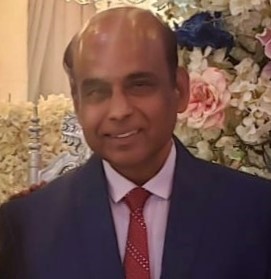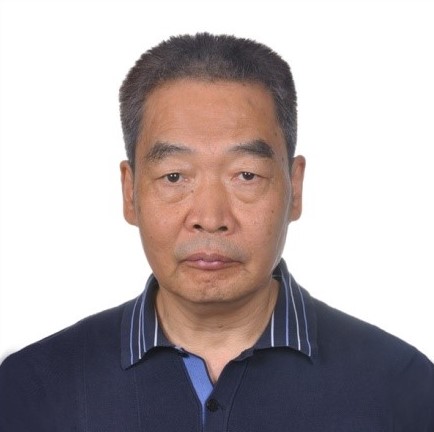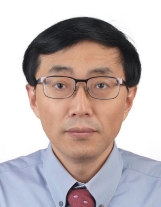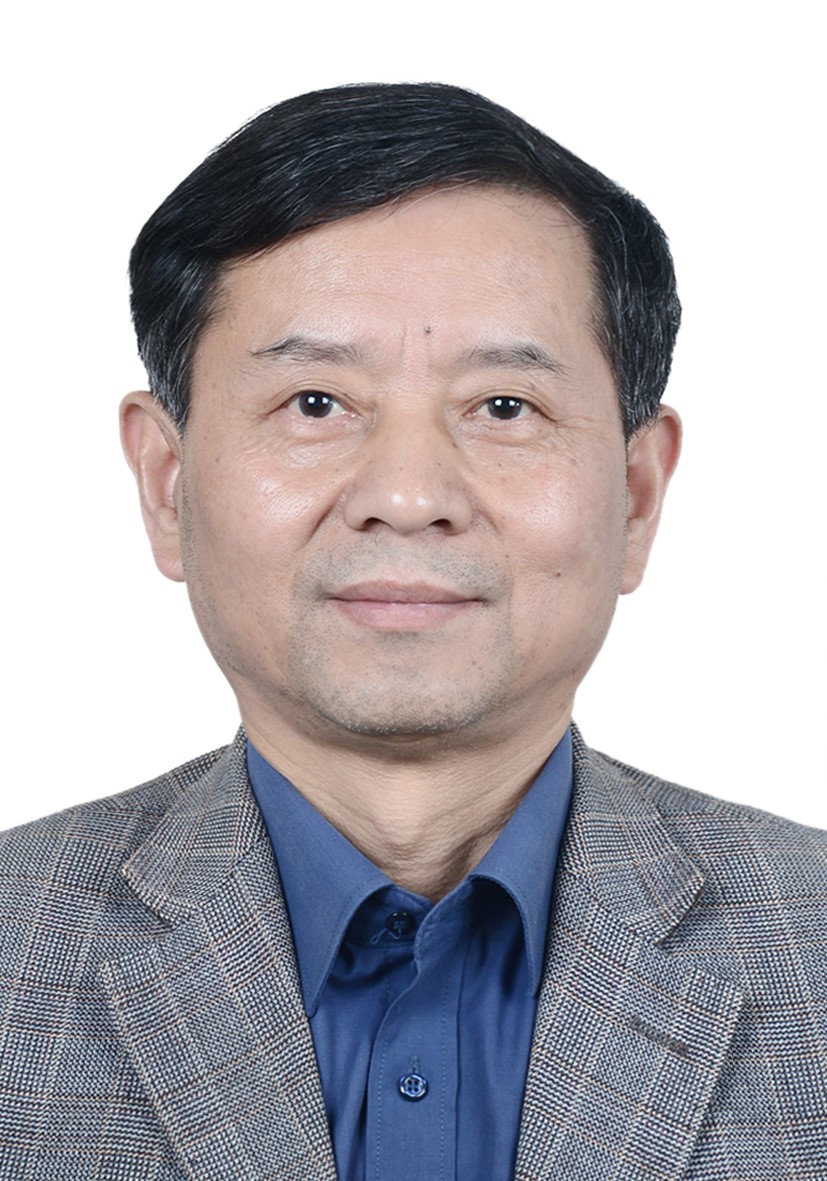
ISAES2022

Prof.Anil Srivastava,University of Texas Rio Grande Valley,USA
Title:Innovations for Cost-Effective, High-Quality Machining of Aerospace Materials
Abstract: In aerospace industry, various structural and other complex components and assemblies are made using very specific materials such as aluminum, titanium and nickel-based alloys, stainless steel, and composites. These components are required to be machined with highest precision and the most optimized process to meet demanding specifications. During this presentation, the speaker will discuss about few innovative machining solutions that are important for aerospace industry. Development of innovative machining technologies in academic research labs when transferred to real production in aerospace industry, enhance the productivity, cost effectiveness and high quality of the aerospace components. During this presentation, the speaker will talk about few such innovations that are already being used in aerospace industry and few innovative ideas that, if used, may provide an advancement in machining of aerospace materials, and add value to the future of manufacturing.
Biography: Dr. Anil Srivastava is Professor, Manufacturing Engineering Department at the University of Texas-Rio Grande Valley (UTRGV), Edinburg, TX. Dr. Srivastava received his Ph.D. degree in Mechanical Engineering from Indian Institute of Technology, Kanpur, India in 1985. In 1988, he moved to McMaster University, in Hamilton, Ontario, Canada and conducted research on ‘Intelligent Control of Robotic Grinding Process’. In 1996, he joined Institute of Advanced Manufacturing Science (now known as TechSolve, Inc.) located in Cincinnati, OH, USA. He served TechSolve Inc. for eighteen (18) years in various capacities, finally working as Chief Technology Officer (C.T.O.). Dr. Srivastava has been successful in attracting more than sixteen million ($16,000,000) dollars grants from various federal agencies (NIST, NSF, DoD, DoE) to conduct research and workforce development in advanced manufacturing in collaboration with other organizations and researchers. Dr. Srivastava conducts research and development work in broad area of manufacturing that can be directly transferred to industry in production environment. During his career, he has supported and collaborated with several aerospace industries such as GE Aviation, Rolls Royce, Northrop Grumman, Boeing, and Lockheed Martin in solving their machining-related issues in real production.

Prof. Wuyi Chen, Beijing University of Aeronautics and Astronautics, China
Title:Material Testing under Multi-dimensional Forces to Facilitate Light Weight Design
Abstract: Conventional ways of structure strength design based on the data from one dimensional material testing, mostly tensile strength testing, would have errors which gives the structure more strength, and thus, larger weight. New material testing machines were developed based on PKM and could apply multi-dimensional forces to produce such deformations as tension, torsion, bending, etc. simultaneously or in sequence. Experiments with steel, aluminum alloy, CFRP and CMC samples were carried out on these machines and revealed interesting results. The tested tresses under tension and torsion combination on steel samples could be 38% to 47% larger than that calculated with Tresca criterion and Mises criterion. The tested tresses with aluminum alloy samples under torsion-bending-tension combined load were also generally larger than the calculated stresses. Under compressive force of 2333N, twist angle within 25 would cause rupture on CFRP sample, which was damaged owing to delamination and transverse cracks. Torsion plus compression tests on CMC samples showed that the compressive strength increased compared to that in pure compression test. The larger the pre-torsion angle was, the higher the compressive strength would be. Simulations showed that when the redundant strength found by multi-dimensional material testing was put into structure design, the weight reduction would be attractive.
Biography: Prof. Wuyi Chen, Born in 1951, received his MSc from Taiyuan Institute of Machinery (presently North China University) in 1984 and his PhD from The University of Birmingham, UK, in 1994, worked in Taiyuan Institute of Machinery and Beihang University as a lecturer, an associate professor and a professor, interested in the research fields including theory and technology of cutting and grinding, manufacturing process and equipment, etc. undertook a number of NSFC projects, Aviation science foundations, National science and technology major projects of China, published over 300 papers on academic journals and conferences and hold 12 patents,won National defense science and technology award and The second prize of national technology progress award.

Prof. Zishun Liu, Xi'an Jiaotong University, China
Title: Recent Development of Constitutive Models for Smart-Soft-Light Materials-And Their Potential Applications in Aerospace Engineering
Abstract: In aerospace engineering, many structures not only need to have certain strength, lightweight and intelligent of materials are also important aspects. In recent years, the new intelligent ultra-light soft matter materials have developed rapidly, such as hydrogel, shape memory polymers (SMPa) and aerogel, etc. These new materials provide new candidate space for aerospace engineering. How these new materials can be applied to aerospace engineering presents a new challenge for mechanics researchers. The first problem we need to solve is their constitutive models of these new materials.
Hydrogel is a type of synthetic polymers composed of cross-linked polymer network and water. A polymer network can imbibe copious amounts of water and swell, which can be used in many potential applications, such as in aerospace engineering. SMPs are also a type of smart materials that can keep a temporary shape after pre-deformation at a higher temperature and subsequent cooling to a lower temperature. When they are reheated, their original shape can be recovered. Silica aerogel is a nano-porous and ultra-light material which is called the lightest solid material. It exhibits spectacular optical, mechanical, electrical, and thermal properties. They have been used in the aerospace engineering, for example since silica aerogel having large thermal resistance, making it very suited for applications such as thermal insulation of the Mars rovers and Spirit. Before these new materials can be properly applied in aerospace engineering, their mechanical properties should be studied carefully. Thus, it is imperative to understand their deformation behaviour. Since the constitutive models of these new materials are still in under development. Therefore, it is very imperative to assess and discuss the advances of the constitutive models for these soft materials and ultra-light materials.
In this presentation, we will review some of the recent works aligned with the direction of providing a better understanding of new development of constitutive models of soft materials and ultra-light materials. Some new advances of constitutive models of soft matter, intelligent materials and ultra-light materials, and the potential applications of these new materials will be discussed in the aerospace field. Furthermore, we will provide some outlines for plausible future directions in the research of constitutive models in soft and ultra-light materials.
Biography: Dr. Zishun Liu is a Professor of Xi’an Jiaotong University (XJTU) and Executive Director of International Center for Applied Mechanics. He is also the General Secretary of Int. Association of Applied Mechanics (IAAM) and the Honorary President of Singapore Association of Computational Mechanics. He is Fellow of Int. Association of Applied Mechanics, Fellow of International Association of Advanced Materials and SACM fellow. He served on the faculty of XJTU between 1986 and 1994, and as Senior Scientist, Capability Group Manager at Institute of High Performance Computing, Singapore (IHPC), and Associate Professor of NUS at various points from 1999 to 2012. As a visiting scientist, he worked in Max Planck Institute for Metals Research, Stuttgart, Germany and University of Glasgow, UK in 2005 and 2006 respectively. His research interests are in the areas of Mechanics of Soft Materials, Computational Solid Mechanics & Biomechanics, Nanomechanics, Vibro-Acoustic. He has published more than 200 SCI referred research papers and many of his research articles were awarded Most Cited Author Award. Now he also holds Adjunct Professorships in NUS.
Dr Liu is an active member of various leadership roles in editorial boards and professional communities as follow: Dr. Liu is an Editor-In-Chief of Int. Journal of Applied Mechanics and Int. Journal of Computational Materials Science and Engineering, and Editor of Journal of Mechanics of Material and Structures, Associate Editor of Journal of Applied and Computational Mechanics. He also serves on the editorial boards of IJCM, IJSSD, AMS, AMSS etc.. As a Chairman, Dr. Liu has organized more than 20 Int. Conferences in the field of computational mechanics & applied mechanics.

Prof. Jianzhong Lin, Zhejiang University, China
Title:On the research of particle evolution in nano-particulate turbulent flow
Abstract: Nano-particulate turbulent flow is very common in nature and practical application. Nanoparticles in the form of monomer and aggregate undergo the processes of generation, convection, diffusion, coagulation and breakage in the turbulent flow. In this paper, we briefly review related researches and draw following main conclusions. Particle formation is caused by surface cooling, adiabatic expansion or mixing, turbulent mixing or supersaturation of condensable vapor produced by gas-phase chemical reaction. The causes of particle coagulation include Brownian motion, turbulent shear, velocity gradient and differential settlement. Particle coagulation depends on particle size and flow field characteristics, and is controlled by initial particle distribution and turbulent diffusion. The influence of turbulence field on particle coagulation is not only the turbulence intensity, but also the fluctuation of particle number density caused by turbulence fluctuation. The agglomerates are easy to be broken under the action of flow shear and other factors. Shear fracture is the main factor leading to particle breakage. The effective breakage coefficient depends on the shear rate and the volume fraction of particles. The deposition of particles depends on the particle size, shape and fluid properties of particles. Gravity, diffusion, inertial impact, electric field and heat transfer are the main factors leading to particle deposition. When there is a temperature gradient, the thermophoretic force also plays an important role in particle deposition. Finally, some problems are put forward to be further studied.
Biography: Jianzhong Lin is a professor in the school of Aeronautics and Astronautics at Zhejiang University, China. He received his PhD degree from Peking University in 1991. His scientific interests are multiphase fluid flows, nanofluids, micro fluid dynamics, turbulence and fluid machinery. His works were funded by more than 40 research projects, including National Natural Science Fund for Distinguished Young Scientists, Key Project of the National Science Foundation of China. So far he has published more than 600 academic papers and won more than ten science and technology awards. He was the associate editor of International Journal of Multiphase flow and editor of Journal of Aerosol Science, and is currently serving as the chief editor of Mechanics in Engineering, associate editor of Applied Mathematics and Mechanics, associate editor of Journal of Drainage and Irrigation Machinery Engineering, deputy director of editorial board of Journal of Hydrodynamics, and editorial board members of more than ten academic journals. He is now the member of council of the Chinese society of mechanics.
Copyright© ISAES
2024 3rd International Symposium on Aerospace Engineering and Systems (ISAES 2024) http://isaes.net/
